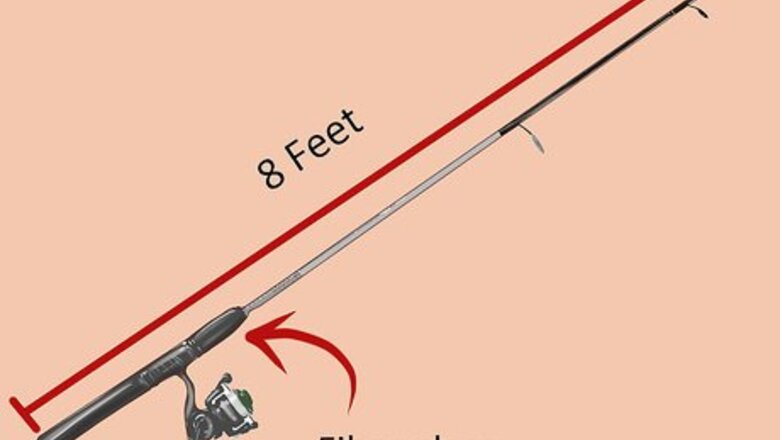
views
Gathering Supplies
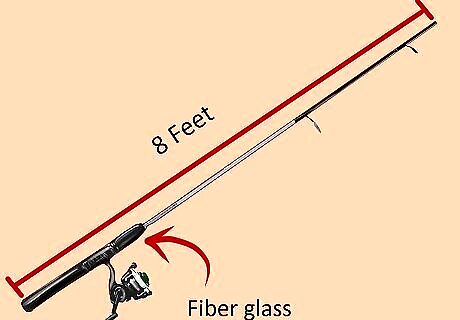
Get a good quality fishing pole. A good fishing pole would be one that has a sturdy, fiberglass or graphite, a line that won't snap easily, and other features that actually work. Choose a good size for the fishing pole, such as is 8 feet (1.5 meters). Having backup equipment is also really important. Make sure you have two rods with you, just in case something happens.
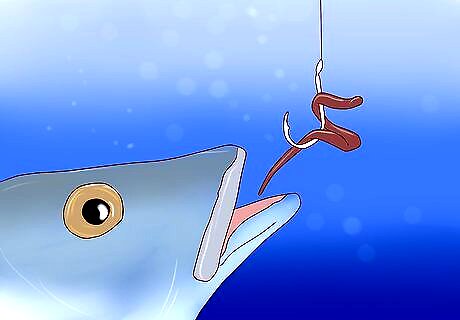
Choose good bait to take for the fish you're looking to catch. Fish that live in rivers, such as sturgeon, bass, carp, catfish, etc., need bait that would attract them to your hook. They prey on many types of other fish and sea creatures, so find a bait that your target fish would want. Take an assortment of bait since you might be fishing for many types of fish. Use thawed frozen chunks of sardines secured to magic string (flexible clear rubber string) wrapped around the no.3 hook. Use blood worms for your lure. Rip off their heads or they might snap and bite your fingers. Just be careful not to splash blood on yourself. Thus, they are named blood worms.

Get some polarized glasses if possible. These glasses will help you look for fish more easily. You will be able to see through the river and find fish with them. This can prevent wasting time, as well as catching more fish.
Picking Where to Fish
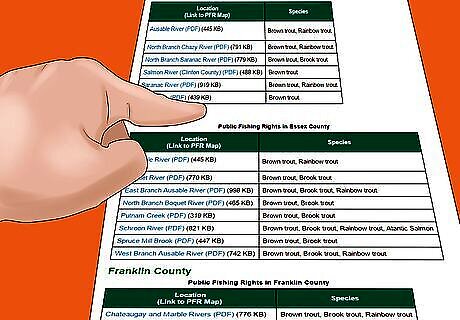
Research local river options where fishing is legal. Check with local fish and game agencies for catch limits, rules and regulations; they change every year. See if you are allowed to keep the fish you catch if you are planning to do so. Some places only allow catch and release. You might need a license to fish in some places, but that can usually be obtained online through a website or an app. Just do a quick search online and you'll should be ready to go in a matter of minutes.

Look at the features of the rivers you're considering. Choose a river that has a curved edge. Rivers that are curved are better to fish on the edge since the faster water (this usually carries the food that fish eat in water) moves to the edge of the bend. This is where fish usually look for food, and you can easily fish in that part of a river. Look for rivers with merging currents. When two bodies of flowing water meet, there will be more fish food flowing in the river, which means more fish may go in that part of the river to find food. Catch fish in a part of a river with merging currents - that way, you will catch quite a few. Catfish are attracted to fresh water streams, you can find them where streams and creeks meet the river. Choose a river with places that have weeds and islands on them. Places where there are weeds have lots of fish hanging in that area since they like to shelter there and surprise attack their prey.Islands also have some good fish to catch there. Find a river that is calm. Calm rivers with no fast moving currents are great for fishing. The fish can easily smell the scent of the bait that way instead of a rushing river, where they can just zoom past without smelling the bait. Find a river with currents, but not as fast as just zooming past. This is only if you can't find a calm river. Choose a river to fish in that has slow currents. Fish can still be moving, but not as fast and can still smell their prey more easily in there.

Don't trespass private property without consent. Ask an owner of the place the river is in and tell them if you can keep the fish or not. If you can't keep the fish and you do, you may be fined as well as other problems happen, since this may be illegal.
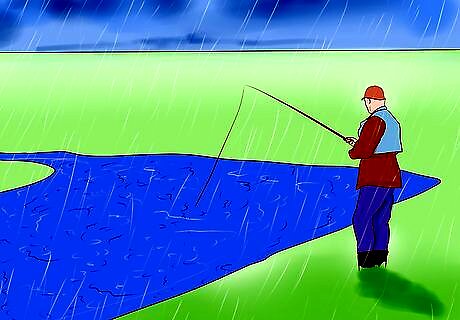
Decide when to fish. Consider visiting the river where the fish are most active so you can catch more. Check the weather and make sure it is a good condition for fishing. Consider fishing when it rains. Fish like cold, wet water, so they will be most active at this time. Another good time to fish in a river is at dawn. Fish do not like direct light, and they seem to be active at sundown and sunrise. You really have to first know where you want to go, as that will influence the optimal time of the day to fish. There are a lot of different resources, including podcasts and magazines, that you can use to learn more about the place where you'll go fishing so you can have a better time.
Catching Fish

Hook a piece of bait on the fishing pole's hook. Good baits are lures that have strong smells that a fish would normally eat as prey, but live bait is also helpful. This is called bottom bounce live bait. Be sure to bounce your bait with the currents, and not against it.
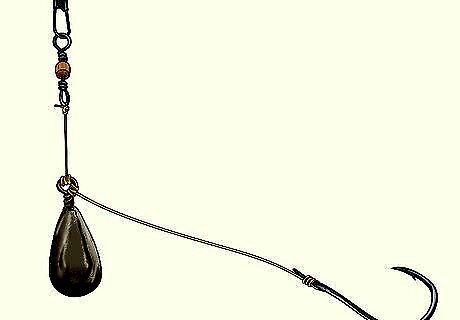
Use a sinker (lead weight) (4-10 ounces). When you set the lure, a triangular shaped sinker is tied to a slider on the line to anchor the bait to the bank (river bottom) and keep it from rolling down with the current.

Hold your fishing pole behind you and cast (throw) the line towards the river. Be sure you don't let go of the fishing pole, as it could break or get washed away by the fast currents. Hold the fishing pole tightly - the fast currents of a river can wash it away from your hands.
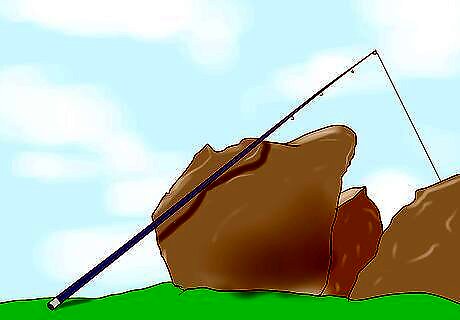
Set your fishing pole resting on a stick or other object so you don't get tired of holding the heavy pole.
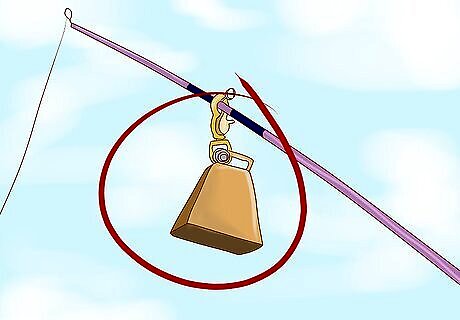
Attach a giggling bell to the tip of the pole after casting (throwing) the lure. Or you could balance a tin can to warn you when a fish bites.
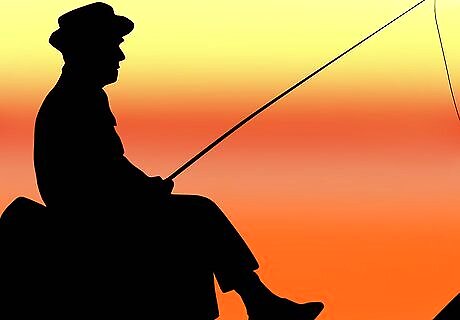
Wait patiently. Keep an eye on your rod so you notice if you catch anything.
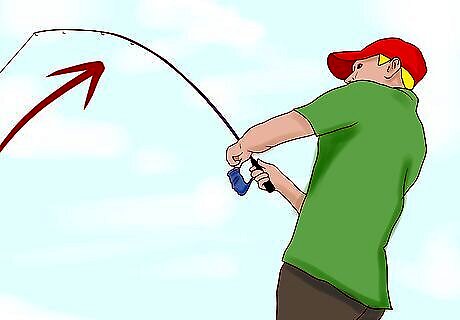
Quickly snap the pole and pull to hook the fish mouth when you feel a slight tug, The hardest and most crucial step that you should learn is knowing when and how to pull the line. Thus, only with practice and experience you'll master that. Hence, fish are pretty clever. You'll find out that your bait is gone and was eaten before you even know it.
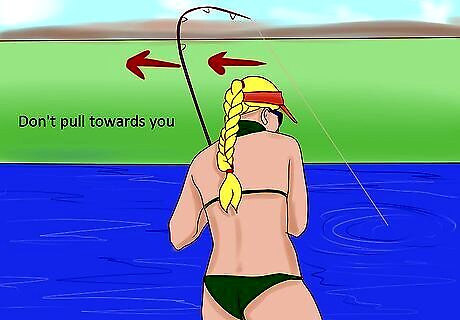
Pull the pole tightly and not towards you. If you do, the fish can slam into you. Pull it upwards and wait until it lands on the ground. Hold it down quickly so it doesn't flap away, and wait until it stays motionless. Carefully take the hook out of wherever it is sticking in the fish.
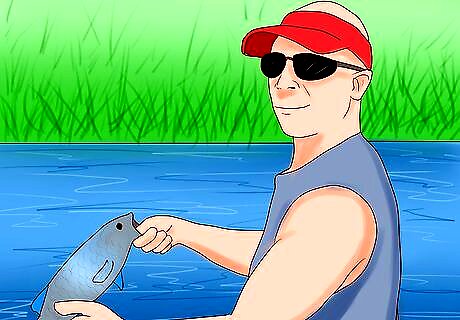
Take it home for a great meal, or just let it go into the water. Be sure there is nothing wrong with the fish so it survives. Let it into the river in the least part with a lot of rocks and rushing water. You can use a tie rope to hold the fish you've caught anchored to shore alive while you fish for more.














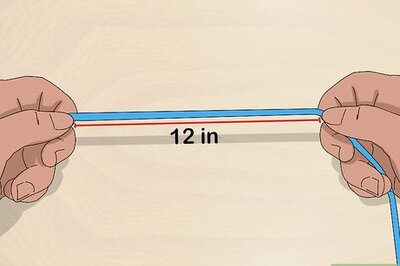





Comments
0 comment